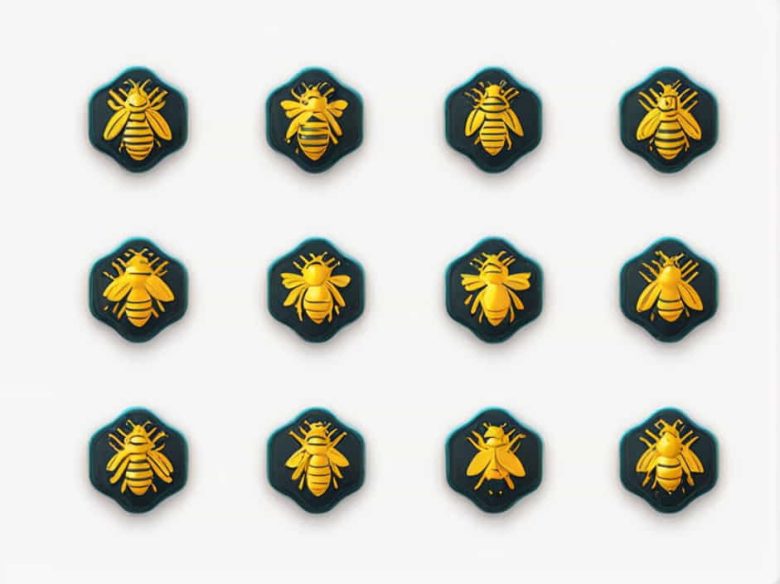A swarm of bees is a fascinating natural phenomenon that occurs when a large group of honeybees leaves their original hive in search of a new home. This event is a crucial part of the bee colony’s reproductive cycle ensuring the survival and expansion of the species.
Swarms may seem intimidating but they are generally not aggressive. Understanding why bees swarm how they behave and what to do if you encounter one can help people appreciate these remarkable insects and their role in nature.
1. What Is a Bee Swarm?
A bee swarm consists of thousands of worker bees a queen bee and sometimes a few drones. The swarm leaves its hive when the colony becomes too crowded and a new queen is about to take over.
Swarming usually happens in spring or early summer when food is abundant and conditions are favorable for starting a new colony.
2. Why Do Bees Swarm?
Swarming is a natural method of colony reproduction. Several factors contribute to swarming behavior including:
A. Overpopulation in the Hive
As the colony grows the hive may become too small to accommodate all the bees. When this happens the colony prepares to divide.
B. Presence of a New Queen
Worker bees raise a new queen before the swarm occurs. The old queen then leaves with part of the colony while the new queen remains in the original hive.
C. Seasonal Triggers
Swarming typically occurs during warm months especially in spring when flowers bloom and nectar is plentiful.
D. Genetics and Instinct
Certain honeybee species are more likely to swarm due to their genetic traits. This instinct ensures their survival by expanding the population.
3. How Does a Bee Swarm Form?
The swarming process follows a structured pattern:
A. Preparing to Leave
- Worker bees begin feeding the old queen more food making her lighter for flight.
- Scouts search for a temporary resting place.
B. The Swarm Leaves the Hive
- Thousands of bees take off together flying in a coordinated cloud.
- They settle on a tree branch fence or other surfaces nearby while scouts find a permanent home.
C. Finding a New Home
- Scout bees search for a suitable nesting site.
- Once a location is found the entire swarm moves to the new home and begins building a hive.
4. Are Swarming Bees Dangerous?
Despite their intimidating appearance swarming bees are not aggressive. Here’s why:
A. No Hive to Defend
Unlike bees in an established hive swarming bees do not have honey larvae or a home to protect making them less likely to sting.
B. Focused on Finding a New Home
Their priority is to locate a new nesting site not to attack. They remain calm unless provoked.
C. Only Defensive if Threatened
If disturbed or swatted at bees may sting in self-defense. However they usually avoid confrontation.
5. What to Do If You Encounter a Bee Swarm
If you see a bee swarm follow these steps to stay safe and protect the bees:
A. Remain Calm
- Do not panic or make sudden movements.
- Avoid swatting or spraying the bees with water or insecticides.
B. Keep Your Distance
- Give the swarm space and do not attempt to touch it.
- Swarms often move within a few hours or days.
C. Contact a Beekeeper
- If the swarm settles in an unwanted location contact a local beekeeper or pest control expert for safe removal.
D. Avoid Using Insecticides
- Bees play a vital role in pollination and should not be harmed.
- Professional beekeepers can relocate the swarm without killing them.
6. The Role of Bee Swarms in the Ecosystem
Bee swarms are essential for pollination and biodiversity. Here’s why they matter:
A. Pollination of Plants and Crops
- Bees are primary pollinators helping flowers fruits and vegetables reproduce.
- Without bees global food production would decline significantly.
B. Maintaining Bee Populations
- Swarming ensures the continuation and expansion of honeybee colonies.
- It helps maintain genetic diversity within bee populations.
C. Indicating Healthy Ecosystems
- A healthy bee population is a sign of environmental stability.
- Declining swarm activity could signal ecological problems like habitat loss or pesticide overuse.
7. Common Myths About Bee Swarms
There are several misconceptions about bee swarms that lead to unnecessary fear:
A. “Swarming Bees Will Attack You”
- Swarming bees are generally docile and not aggressive.
- They only sting if provoked.
B. “Swarms Are a Sign of an Infestation”
- Swarming is a natural behavior not an invasion.
- Once they find a new home they move away.
C. “All Bees Swarm”
- Not all bee species swarm.
- Honeybees are the primary species that exhibit swarming behavior.
8. How Beekeepers Manage Swarming
Beekeepers use several techniques to control or prevent swarming in managed hives:
A. Providing Additional Space
- Adding extra hive boxes prevents overcrowding.
B. Splitting Colonies
- Beekeepers divide large hives to reduce the likelihood of swarming.
C. Queen Management
- Replacing an aging queen with a new one can stabilize the hive and reduce the swarming urge.
D. Monitoring Hive Conditions
- Regular inspections help identify early signs of swarming allowing for preventive actions.
9. The Future of Bee Populations and Swarming Behavior
With increasing threats like habitat destruction climate change and pesticide exposure bee populations are declining. Conservation efforts are crucial for maintaining healthy swarming behavior and protecting bees.
A. Supporting Pollinator-Friendly Practices
- Planting bee-friendly flowers in gardens and urban spaces.
- Avoiding harmful pesticides and herbicides.
B. Encouraging Sustainable Beekeeping
- Supporting local beekeepers who practice ethical hive management.
C. Raising Awareness About Bees
- Educating communities about the importance of bees and their role in the ecosystem.
A swarm of bees is a natural and essential part of honeybee reproduction. Though they may look intimidating swarms are not aggressive and play a vital role in pollination and colony expansion. Understanding their behavior helps us appreciate bees and protect their populations.
If you encounter a swarm stay calm give them space and contact a beekeeper if necessary. With the right approach we can coexist peacefully with these incredible insects and support their crucial role in nature.



